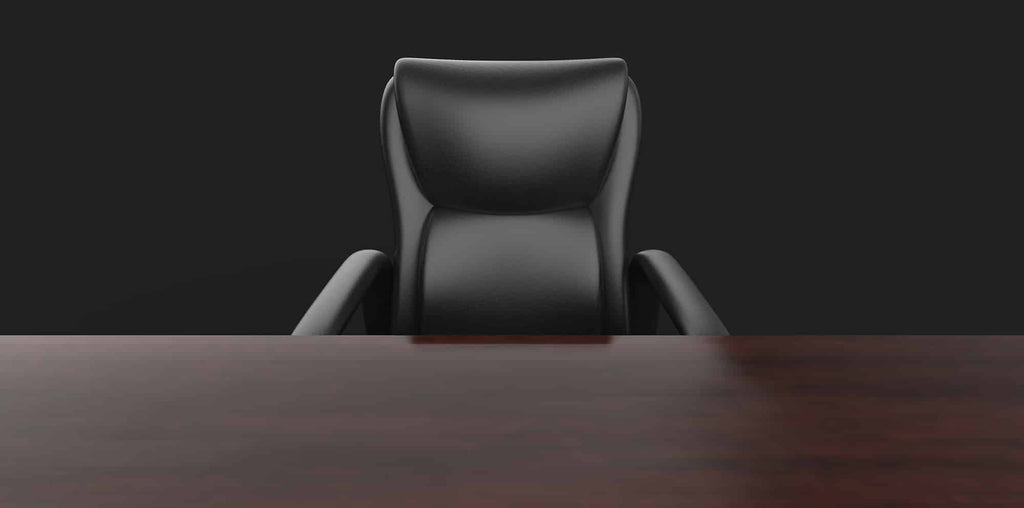Founder's Notes
Lessons Learned About Quality
I have a chair in my office that in years past I was of the opinion that it cost a lot of money; that feeling still lingers. And while what passes for “a lot of money” hasn’t changed much over the years, I have learned that this is not the same as saying that it is “worth what it cost me.” And today, I would still consider it to be a relatively expensive item, but just as a coffee lover goes to their favorite barista for the best espresso or an audiophile paying up for ‘pristine’ recordings, sometimes it is simply worth paying more (when you can); it’s like “grading on a curve” where the only thing that matters, is you and how you feel about something. And just as I hope that there will be times you can afford to drink great coffee, tea, drive a nicer car, etc, the takeaway is that some things are important enough to each of us to be worth that higher price tag - particularly if it enhances your life in some way. I have owned and used a lot of poorly made things over the years and I often think about what that chair has taught me about quality and what that means… to me and possibly, to you. Let me explain.
In years past, when my pants and I got along better, I used to only have two categories of items that I purchased: big things that were financed, like a car, boat or a house and then everything else went in this catch-all basket of things. It seems silly now, but a new computer and a pack of gum were in the same basket. When it came to having an office and needing a chair to sit on, that’s where “the office chair” and I - first met. Like everything else, the chair went into the “everything else” basket, so I went down to a nearby store where I got my pens and bought a chair. Because gum and chairs were in that same basket, I would always buy only what I could justify, what I had handy at the time.
Quality Relationships
Pet owners are pioneers in a sense, in that they know what it’s like to share their life with something that is other than another human being. Moreover, they understand how the quality of your life can be enhanced or diminished by that relationship. I have come to understand that we also have relationships with things too. And whether it’s your favorite pair of jeans or sneakers, there is an element of choice and there is a relationship there. And like most relationships, we choose to have these things in our lives and we interact with them - sometimes on a daily basis. Most of those relationships are simple but they grow or wither depending on the quality of the experience you have when you interact with them. To this end, artisans and craftsmen have always had relationships with their tools the way a professional violinist might have a loving relationship with a fine instrument; they are primary tools because of the effect they have on the quality of what is produced. Experienced professionals know that tools matter because, no matter where you start, as you improve, you need quality tools that can keep up and not hold you back. Having the right tool can dramatically elevate your work as executed by a skill set that you have spent a lifetime developing.
Cheap and Inexpensive are Not the Same Thing
Like a roommate that you remember liking when you first met, once you live with someone, you start to notice things. That office chair of mine never seemed to have the right adjustments and the concept of comfort was never more than a passing fancy. As a result, I would quickly become tired, which limited how long I could work before I was also fighting fatigue on top of everything else. And due to the materials used and the less-than-stellar construction, it would quickly wear out… sometimes in dramatic fashion. One time, the seat just came apart and I ended up on the floor, only to notice all the sharp, jagged edges that told me that it could’ve been much worse. Why all the drama? Because cheaply made things impose hidden penalties that you don’t discover until after you have made the commitment to buy. They get that way by compromising one (or more) of three things: materials, process or design. It’s not always easy to tell when they are using cheap materials and it is not always easy to see what part of your expectation is being compromised; designs that are cheaper to manufacture sometimes leave you at a disadvantage when you can only see the exterior - which is often made to look quite nice. The problem is that while they look great in the store or in the product photos, once money has changed hands, the story changes. And when there is a problem, everyone involved points to all the other factors, real or imagined, that contributed to your unhappiness because, “it couldn’t possibly be a problem with the product.”
It is an important nuance that expensive things are not always high quality and inexpensive things are not the same as cheap; some things are naturally less expensive due to size, design and/or a host of other factors, especially when there is no issue of quality or performance. Natural materials are often equated with quality, however, even that is not always true. Once you consider that the invention of synthetics is not always done to save money, you see that sometimes high-quality synthetics deliver superior performance. Sailboats built for competitive racing or electric cars would be good examples, however, many natural materials and ingredients have never been artificially replicated or surpassed; see ambergris, or vanilla beans for some examples.
Quality Pays for Itself
So, getting back to my chair, eventually, I got a job where the company had bought high-quality chairs for everyone, but where they saw quality, I just saw ‘expensive’; I couldn’t have been more wrong. I couldn’t believe what a difference it made - how the quality of the chair affected everything I did while at my desk; this included the quality and quantity of the work I did. This experience stood in stark contrast to the fact that I seemed to be buying a new home office chair just about every year. Well, it didn’t take more than basic math to figure out what that was costing me. It wasn’t easy at first, but I started saving and waiting just a bit longer before buying the next chair. And twenty years later, I am still sitting in that same chair and it has saved me thousands in that time. More importantly, that chair improved the efficiency and the quality of the work I do and has paid me back many times over - and it has never dumped me on the floor.
Lessons Learned
Now when I shop, there are at least two relationships to consider: my relationship with the item I want to buy and the experience with the company who made it. These should be simple things but way too often there is no relationship at all with whomever made it; they are simply a faceless enigma that tosses it over the fence and walks away. Sometimes it doesn’t matter, but this type of relationship almost always ends with zero satisfaction.
It should not be this hard, but I think that companies that make things too often start in the wrong place; they focus on what they want to sell instead of what I need. However, now when I am making a purchase, I pay much closer attention to what they say and ask myself, are they focused on my success or theirs? As to the question of whether an item is worth what they charge, I wonder if sometimes, by setting an unrealistically-low price, they may simply be trying to lower my expectations. There is a game being played here. The thinking goes that if my expectations are low enough, I won’t complain no matter what happens; that’s when a sale becomes a donation.
After all this, the one thing I am sure of is that when the day comes that I need to buy another chair, it won’t be from the same place where I buy my pens.
Thanks for listening.
-sp

